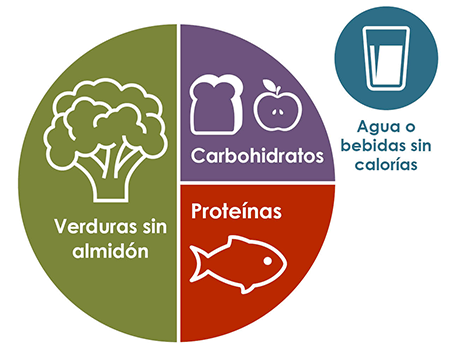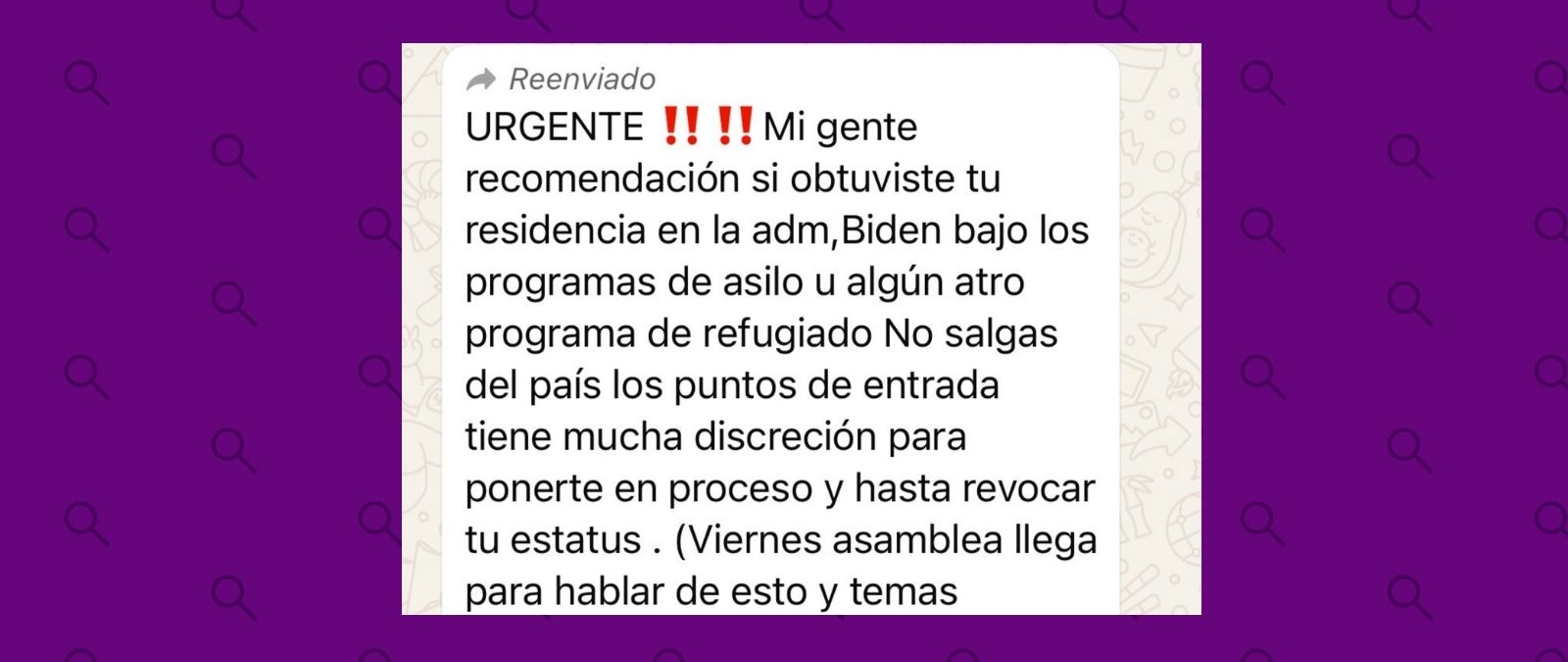There are diseases and symptoms closely related to our diet. This is the case, for example, of diabetes, whatever the type.
Diabetes consists of "a series of metabolic disorders in which blood glucose is high and remains at these elevated values." This is how Carlos Ortega, a retired family doctor, diabetes specialist and one of the authors of the Comprehensive Diabetes Plan of Andalusia, explained it to Maldita.es, co-founder of Factchequeado. These disorders can appear either because the pancreas does not produce enough insulin or because the body does not use it correctly. In the long term and sustained over time, high glucose levels can cause damage to the entire body, its tissues, organs (especially eyes and kidneys) and blood vessels.
What is the function of insulin and what problem does it pose in diabetic people?
To begin with, glucose is the main source of energy for our body. "We obtain it from ingestion, since food can contain simple sugars, but also carbohydrates (glucose chains linked by chemical bonds)," explains dietitian-nutritionist Natalia Celma on the Júlia Farré nutrition center website. When digesting these carbohydrates, our body breaks them down into simple sugars (glucose) that pass into the bloodstream.
This is where insulin, the hormone that our pancreas synthesizes, comes into the picture. This is responsible for the sugar that "we have eaten" (as well as that from the reserves in the liver and muscles) can be introduced into the interior of the cells and transformed into energy.
In diabetic people, insulin does not perform its function correctly. Why? For 2 possible reasons: the first one is that our body is not capable of manufacturing it in the necessary quantity; the second one, that the one that does manufacture it is 'defective'. In these cases, "the sugar stays in the bloodstream instead of entering the cells, producing hyperglycemia," says Celma.
What the term 'hyperglycemia' implies is that blood sugar levels shoot up to 180 and even 200 milligrams per deciliter (mg/dL) when, according to the Centers for Disease Control and Prevention (CDC, for its acronym in English), the 'normal' values are below 99 mg/dL.
Diet is a fundamental pillar for diabetes control
Diet, along with drug treatment and exercise, is one of the fundamental pillars for controlling diabetes. "Having diabetes does not imply not being able to enjoy food again, but rather acquiring sufficient knowledge to know which food groups have the capacity to raise blood glucose and, therefore, must be monitored so that control is good," Celma stresses. .
Something in which the CDC agrees, which offers some recommendations for the diet of a person with diabetes: "A good meal plan will take into account your goals, tastes, and lifestyle, as well as the medications you are taking."
The agency advises including non-starchy vegetables in the diet, such as broccoli, spinach and green beans, in addition to "whole foods instead of processed ones." It also recommends reducing your intake of added sugars and refined grains, for example, from white bread, rice and pasta that contain less than 2 grams of fiber per serving.
“It is easy to eat more than you need without realizing it,” the CDC notes. To avoid this, they advise people with diabetes to follow the so-called "plate method," which involves taking a 9-inch plate and filling half of it with non-starchy vegetables, such as salad, green beans, broccoli, cauliflower, cabbage and carrots.
In addition, one quarter of the plate should be filled with lean protein (such as chicken, turkey, beans, tofu or eggs) and the other remaining quarter with carbohydrates. For example, with starchy vegetables (such as potatoes), rice, pasta, beans, peas, fruit, or yogurt. The ideal, according to the organism, is to accompany this meal with water or a low-calorie drink, such as cold tea without sugar.

Why control the consumption of carbohydrates in diabetes
Carbohydrates are the main source of energy. As we mentioned, when our body digests this macronutrient, it generates glucose that passes into the blood to be distributed throughout the body.
Since people with diabetes have problems making the cells use glucose, thus preventing blood sugar levels from exceeding healthy maximums, one of the guidelines in their diet is based on avoiding ingesting these nutrients in excess, thus reducing the risk of hyperglycemia.
In particular, simple sugars should be restricted, such as those contained in juices, soft drinks, and foods processed from refined flours. The amount and time in which carbohydrates are taken should be adapted to both the pharmacological regimen and the physical exercise habits, according to the National Institute of Diabetes and Digestive and Kidney Diseases of the United States (NIDDK): “The right amount of carbohydrates varies according to how you manage your diabetes, and includes how much physical activity you get and what medicines you take, if any. Your healthcare team can help you create a personal eating plan based on carbohydrate counting.”
Are there specific recommendations on protein consumption in the diet of a diabetic person?
The main sources of protein are white and lean meat, fish, eggs... but also legumes and nuts. Regardless of its origin, animal or vegetable, the recommendation of the Spanish Diabetes Federation (FEDE), in relation to protein intake, is that it represents 10% to 30% of the total caloric intake and preferably from healthy sources. The NIDDK recommends lean meat (with low fat), skinless chicken or turkey, fish, eggs, tree nuts and peanuts, legumes like chickpeas, and meat substitutes like tofu.
For people with diabetic neuropathy (one of the possible complications of diabetes), a low-protein diet may be recommended, according to a meta-analysis (a review of the results of scientific studies on a topic using statistical techniques) published in the journal Lipids in Health and Disease. However, the authors emphasize that the number of patients studied may limit the precision of the results and that more studies with larger samples are necessary to confirm this. *
Fats must also fulfill their function
As the FEDE points out, the necessary percentage of energy from fat it’s determined based on body weight, glycemia (blood glucose levels) and lipid profile (concentrations of different types of fats in the blood) of each person. .
In general, while in children a fat intake is necessary for their adequate growth, in adults, especially if they are overweight or obese, it is more likely that their intake will need to be reduced. “In adults with a healthy weight and acceptable plasma lipid levels, fat can represent 30% of total energy. These lipids must be, for the most part, unsaturated fats from, for example, olive oil, oily fish or nuts, with a maximum of 10% corresponding to saturated fats of animal origin, such as butter and present. in red meat, and that cholesterol intake should not exceed 300 mg/day”, advises the FEDE.
What happens with fiber?
One of the tasks that fiber has in our body is to slow down the absorption of sugars, avoiding glucose peaks after meals and ensuring that its blood level remains stable for longer. In the case of diabetics, the fiber intake recommendations are similar to those of the rest of the population: around 20 or 30 grams a day.
To give you an idea, according to the FoodData database of the United States Department of Agriculture, kiwis provide 3 grams of fiber for every 100 grams of fruit; the raspberry contributes 6.5 and the pear, 3.1, for example. Not to mention legumes such as lentils (7.9 grams) or nuts such as walnuts (12.5 grams).
Products that we should avoid (or whose consumption we should reduce) in case of diabetes
According to FEDE, in people with diabetes it is enough to follow the guidelines for a healthy diet that meets their specific needs and that there is no reason to restrict any source of nutrients. However, the amount and frequency of certain meals should be controlled.
The NIDDK provides the following list on its website: fried foods and other foods high in saturated and trans fats; foods high in salt; sweets, such as baked goods and ice cream; and beverages with added sugars, such as juices, sodas, and energy drinks.
In addition, she recommends drinking water instead of sugary drinks and avoiding sugar in coffee and tea, as well as alcohol, as much as possible.
Factchequeado is a means of verification that builds a Spanish-speaking community to counter misinformation in the United States. Do you want to be a part? Join and verify the content you receive by sending it to our WhatsApp + 16468736087 or to factchequeado.com/whatsapp.
* We have updated a paragraph with recommendations for people with diabetic neuropathy.









